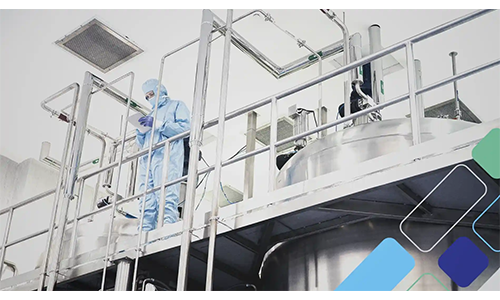When warehouse work begins, two things are on the minds of those in charge: avoid delays and prevent staff injuries. However, speed and repetition are common causes of incidents on the warehouse floor. There were nearly 3 million employer-reported injuries in the workplace in 2021, according to the U.S. Bureau of Labor Statistics. Retail trade and transportation and warehousing saw the largest increase in cases. Transportation and warehousing increased from 206,900 cases in 2020 to just over 253,000 cases in 2021. This sector also had the highest increases in cases that caused workers to miss work, rising 23% to 122,700 cases in 2021.
While these numbers are alarming, they come as no surprise. Business and competitive pressure very often coincide with time pressures. There's urgency to be first to market, win market share rapidly and retain customers so they do not go anywhere else. The wording may be different, but its implications along the supply chain remain the same.
This perpetual rush promotes the peril of accidents as it deters worker attention. Furthermore, labor and staffing continue to shrink. According to a recent survey by Instawork, 73% of warehouse operators can’t find enough labor, up 26% from the 2021 survey. Looking ahead, the manufacturing sector could face 2.1 million unfilled jobs by 2030, according to a study by Deloitte and The Manufacturing Institute. Fewer people on the warehouse floor puts more strain on workers, increasing the risk of accidents and injuries.
Yet, shifts in demand have not been met with changes to measures to reduce injuries. While the Occupational Safety and Health Administration (OSHA) has provided safety guidelines for U.S. warehouses, the high number of injuries that still occur begs the question: Are the current guidelines enough?
As pressure mounts to speed up production and reduce costs with fewer workers, so has the allure of warehouse automation and robotics. However, recent reports of injuries at warehouses where automation and robots have been widely deployed are cause for concern. Are automation and robots helping, or are they creating more dangerous environments for workers?
Speculation aside, now is a time when warehousing executives need to be front-footed and implement measures that will lessen the physical burden for on-the-floor workers. Refocusing on augmentation over full automation is a great place to start. This is about striking the right balance in order to establish a healthy human-machine collaboration. Placing hands-free wearable barcode scanners at the heart of warehousing can serve as a starting point and will help create safer and more efficient work environments.
Here are three ways wearable technology and hands-free barcode scanning can help improve worker safety.
1. Analyze the Way Out of the Unsafe Warehouse
Seemingly, there’s a lack of reliable data and information from the shop floor. Thus, warehouses often turn to third-party auditors to analyze shop floor operations. However, these audits are often subjective and fail to depict the true story of the shop floor. Unless warehouses access real-time, in-depth insights and data about processes, guidance, and time-and-motion studies, they will be stuck in the cycle of leaving areas for safety improvement unidentified.
But it doesn’t have to be this way. Providing workers with wearable tech can unearth an abundance of untapped raw data directly to warehouse workers and managers. Data points on cycle times, walking times and individual workloads will shine greater light on warehouse processes and help to identify the factors contributing to injuries. From there, warehouses can make the necessary adjustments, from redistributing workloads for overexerted workers to mapping out better travel routes.
No two warehouses are the same, so their adaptations to improve safety can’t be, either. Warehouses are well advised to access these unique insights to detect new ways to reduce the number of injuries on the floor.
2. Take the Hurt Out of Handling
Recent research by my firm has revealed that 43% of warehouse staff view staff exhaustion and fatigue as a primary challenge to warehouses. One main contributing factor to staff fatigue is the number of steps taken and the weight lifted on each shift. Some workers walk up to 13 miles and move 20,000 pounds daily.
The use of wearable scanners can reduce the miles walked by warehouse workers—if they come with an integrated display. All too often, those on the floor armed with a hand-held scanner must move between items and stationary terminals in the warehouse. This causes workers to take unnecessary steps. Instead, wearable scanning devices provide picking information on the back of the workers’ hands, eliminating the laborious back-and-forth between items and static workstations.
In addition, although a wearable scanner cannot reduce the weight of items, they can ensure that workers’ hands are free. Allowing workers to lift and handle items of significant weight sensibly and with proper form while reducing or eliminating repetitive tasks that involve a hand-held scanner can reduce fatigue and musculoskeletal disorders. The physical toll warehouse workers endure on each shift can be alleviated by introducing human-machine collaboration on the floor.
3. Safety at Heights
Warehouses’ racking systems require employees to work at elevated heights. Unfortunately, falls from heights, whether low or high, are a leading cause of injuries across all industries.
Accessing warehouse storage shelving presents a critical hazard to employees, and it is the responsibility of managers and every warehouse member on-site to reduce the risks associated with working at heights. Yet, this is no easy feat, especially amid the current labor challenges. Recent hires who are still learning to abide by warehouse safety regulations may be at greater risk for injuries.
Alongside these guidelines, warehousing executives should equip familiar and new faces on the warehouse floor with wearable technology. By doing so, those working at heights will have guidance on the back of their hands, which will minimize distractions that can cause falls. Additionally, wearable tech can help to eliminate the need to overreach dangerously by having the capacity to scan barcodes from a distance.
Unfortunately, the physical demands of the job, working at heights and the absence of reliable data make injuries inevitable in warehouses. Yet, prevention strategies and technology, such as hands-free wearable barcode scanning, can reduce slips, trips and falls, especially from heights. Wearable technology can also provide invaluable data and insights about how the work is performed. This data can be used to inform ongoing improvement plans that benefit workers and the business.
In summary, facilitating human-machine collaboration in the warehouse through technology, specifically wearable barcode scanners, will not only augment worker productivity but also keep them safer and happier. While discussions of automation in the warehouse often conjure up an image that workers will be replaced, augmentation is a more realistic approach.
Axel Schmidt is senior communications manager for ProGlove, a provider of wearable scanner solutions.










































































